We are celebrating two important Chaplin anniversaries in 2019. Next month, on 16 April it will be 130 years since Charlie Chaplin’s birth, and last month, 5 February marked the centenary of United Artists, the studio that Chaplin founded with DW Griffith, Mary Pickford and Douglas Fairbanks. Famously, however, City Lights is a film that ignores time, a silent picture made in the age of the talkies, and an 87-minute feature that took more than two years to make.
Pre-production on City Lights followed swiftly on from the release of Chaplin’s The Circus in 1928. By this time, The Jazz Singer had been released and Hollywood was caught in the scramble to convert to sound. But Chaplin wasn’t so sure. He had long been ambivalent about the idea of sound film, saying in 1921: “I would as soon rouge marble cheeks. Pictures are pantomimic art. We might as well have the stage. There would be nothing left to the imagination.” That’s a beautiful and very bold statement, not least because it implies that cinema is superior to the stage, but also because it compares silent cinema to classical art, to marble statuary. At the beginning of City Lights, you’ll see Chaplin making a joke that recalls this statement, making a mockery of a marble statue. Of course, Chaplin made City Lights as a silent film anyway, and in the year that it was finally released, 1931, he was still unenthusiastic about the appeal of talking pictures, even if necessarily by then he was as defensive as he was defiant, saying: “I’ll give the talkies three years, that’s all.”
City Lights was to be one of the most troubled productions in film history, beset not just by Chaplin’s own demanding, often tyrannical, perfectionism, but by sad circumstances beyond his control. Even before shooting began, in the midst of pre-production, Chaplin’s mother Hannah died in August 1928, and understandably he took weeks to recover from the grief. The sets were being built at this stage, creating a mythical mishmash of a city that combined elements of such diverse urban landscapes as Paris, Los Angeles, London, Naples, Tangier and Council Bluffs, Iowa. Chaplin was sure of the themes and narrative of his new film, which would concern The Tramp, a millionaire and a blind flower girl, but kept on writing and refining his ideas for incidents and minor characters until shooting began on 31 December that year.
Shooting of City Lights would continue until the summer of 1930, more than eighteen months later. You might not think it from the grace and good humour of the finished film, but the shoot was a nightmare, characterised by false starts and reshoots and even recasting. Chaplin worked six or seven days a week for almost three years, and was constantly exhausted – yet despite that stress, this film contains some of his most delicate and joyful comedy.
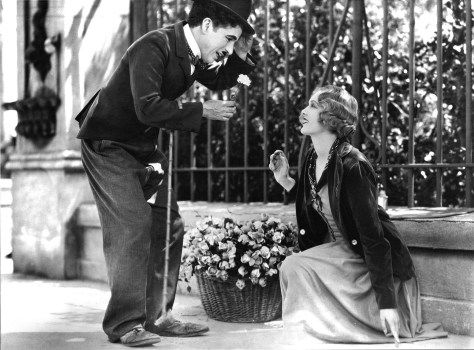
Chaplin had hired a woman with no acting experience, Virginia Cherrill, as his leading lady, the blind flower girl. It sounds quite bizarre now, but he chose her because he thought she played blind more attractively than the other actresses who auditioned – they rolled they eyes too far back in their heads it seems. He had initially thought that the lack of acting experience would be good thing, but it wasn’t long before he began to have his doubts. There was no affection between the two and Chaplin notoriously spent days forcing Cherrill to repeat a simple movement, holding out her hand and saying “Flower, sir?” to his satisfaction. The tension and repetition must have been infuriating for everyone on set. They began at the end of January, but two weeks went by, then another, then Chaplin fell ill. On 1 April they started again for another 10 days, without success. Chaplin moved on to other, more elaborate scenes, such as the opening sequence involving the statue and hundred of extras. By comparison, it seemed easier.
Meanwhile, building work had begun at the studio, which only increased Chaplin’s stress levels. At least he could shift location for the duration, he reasoned, and use the studio swimming pool to shoot a river scene. Unfortunately, this was when the first recasting was required. Chaplin had hired another non-actor to play the millionaire, Australian art director Henry Clive. However Clive refused to jump into the water for this crucial river scene, and was swiftly replaced by comic actor Harry Myers. Needless to say, Chaplin was livid about that too, and his friendship with Clive was terminated. In July, the building work meant that shooting had to halt entirely for a few weeks.
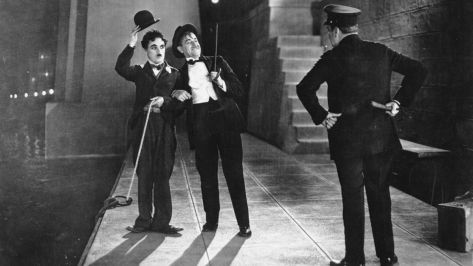
It wasn’t until August that they could work again. And it wasn’t until mid-November that Virginia Cherrill was called back to the set. Nothing had improved, it seemed and Chaplin was frustrated once more. According to which account you read, Cherrill asked to leave the set early one day to keep a hair appointment and Chaplin told her not to bother returning, or she came back from lunch five minutes late and the director bawled her out. Either way, she was fired, and probably relieved that she didn’t have to say “Flower, Sir?” any more.
In search of a new flower girl, Chaplin called in Georgia Hale, who had starred in The Gold Rush. While Chaplin thought Hale had potential, he was overruled by his publicist Carlyle Robinson. He believed, quite rightly, that Cherrill could play the flower girl, and insinuated to Chaplin that Hale would see him if she weren’t given the role – knowing full well that Chaplin would resent being held to ransom like that. Chaplin never hired Hale again, in fact, though it seems they remained on good terms (once this misunderstanding was cleared up) and in fact she accompanied him to the premiere of City Lights. Chaplin then auditioned a sixteen-year-old unknown called Marilyn Morgan, which worried Robinson and the studio yet further, considering the scandals still attached to the director.
Marion Davies, that undersung Hollywood angel, had invited Cherrill to San Simeon to recuperate from the hell of working on City Lights. It was there that Chaplin finally tracked her down and asked her to return. On the advice of Davies, Cherrill agreed only on the condition that he doubled her salary. She returned to the set on 21 November, and in the final days of 1929, they even successfully completed the “Flower, sir?” scene. As Cherril lremembered it, ruefully: “Still doing that damned first scene, and we had a whole year of filming to go … It was all the improvising. Everything had to be changed, all the time. Charlie was such a perfectionist. He couldn’t let it alone until it was just exactly what he wanted.”
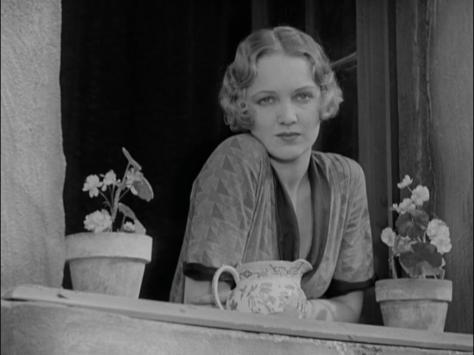
It’s probably true that Chaplin the perfectionist, who directed by example, would only have been happy with one performance in that role, his own. As editor and director Robert Parrish who took a minor role in the film as a newsboy later said: “I and Miss Cherrill watched while Charlie did his show. Finally, he had it all worked out and reluctantly gave us back our parts. I felt that he would much rather have played all of them himself.”
Shooting on City Lights flowed much more easily now, with Chaplin completing the prize fight sequence, in particular, in an especially swift period: four days of rehearsal, and six days of shooting. The part of the film feels like a throwback to Chaplin’s early shorts, and Keystone stalwart Hank Mann plays his opponent in the ring. Shooting on City Lights finally finished on 5 October 1930.

From October to November 1930, Chaplin edited the film and added the title cards. Despite the march of Hollywood progress, he was still making a silent film – one that would have music and a very few synchronised sound effects but no dialogue. Chaplin surprised everyone by writing the score himself, even if he wasn’t sure writing was the right word. He worked with an experienced composer, Arthur Johnston, who would later write “Pennies from Heaven”. “I really didn’t write it down,” he told a reporter. “I la-laed and Arthur Johnston wrote it down, and I wish you would give him credit because he did a very good job. It is all simple music, you know, in keeping with my character.”
City Lights remains not just a silent feature, but even played as it is tonight with Chaplin’s own score, it is an anti-talkie. As in Modern Times, released five years later, speech is meaningless noise, and those who choose to speak merely squawk and babble. It all seems a far cry from The Great Dictator and the most famous film speech of all time, enunciated beautifully in Chaplin’s elegant speaking voice.
The theme of City Lights is the power of sight. Chaplin’s first idea for the film was another circus story, about a blind clown. He abandoned this idea, but continued with the theme of sight and blindness. What’s especially characteristic of Chaplin’s work here is that he manages to wring both humour and sentiment out of the same theme. Chaplin’s character, the Little Tramp, a rank outsider and undesirable in the city, is loved and appreciated only by two people, a millionaire and a flower girl. The millionaire loves the Tramp only when he is blind drunk, and cannot see the social gulf between them. The flower girl, and her love for the Tramp, are just blind – she knows him as the Duke, which could not be further from the truth.
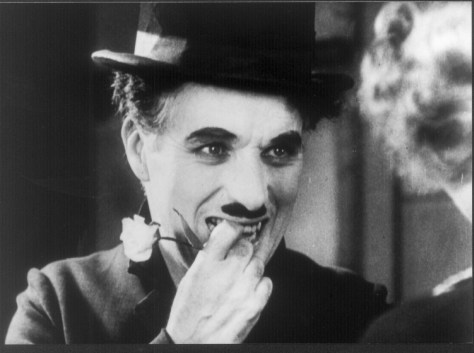
It was rare for Chaplin to start a film knowing exactly how it would end, but in this case, he had the final scene planned from the outset. It is a test of the idea that love is blind, and it is a tearjerker no matter which way you read it. For Chaplin, it epitomised his role as actor-director. “I’m not acting,” he said. “Almost apologetic, standing outside myself and looking, studying her reactions and being slightly embarrassed about it. And it came off. It’s a beautiful scene, beautiful.”
It’s beautiful, but it’s also something else. James Agee said that “it is enough to shrivel the heart to see”. In close-up, as the Tramp asks “You can see me now?”, we are invited to scrutinise his face as the flower girl does. His features are animated by love, but also nerves – see how he bites his fingers. The black makeup, the lines around his eyes, the shabby hat, are all more obvious than before. I think it’s fascinating to compare the final shot of this film with the closing shot of one of Chaplin’s first appearances as The Tramp, in Kid Auto Races at Venice (1914), when he is gurning at the camera. Here he’s goading the camera with his own ugliness. In City Lights, is he asking us to look past it, or accept it? Perhaps he’s daring us to ignore it, knowing we can’t. In the cold light of day, the Tramp remains a tramp.
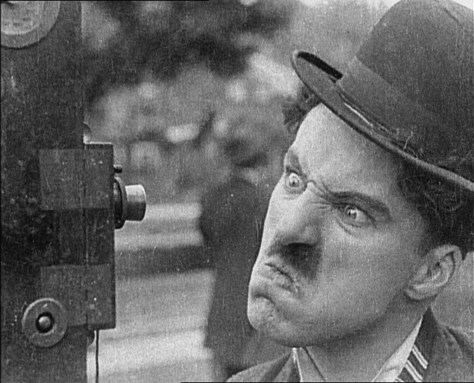
Of all Chaplin’s films, this one was his personal favourite – it’s certainly one of his very, very best. That famous final shot is spectacular. It represents Chaplin the artist examing his most famous creation, the Tramp, a star created by what he considered to be classical artform. And that artform that, no matter how hard he resisted, seemed to be vanishing from sight.
- In celebration of Chaplin’s 130th anniversary, there are orchestral screenings of his feature films scheduled around the world. Check it out – The Gold Rush will be screened in Chelmsford on 8 March.
- You can see City Lights at BFI Southbank on 18 March, with Chaplin’s recorded score.
- 30-Second Cinema, which I edited for Ivy Press, is out this month. You can order a copy here.
- Silent London will always be free to all readers. If you enjoy checking in with the site, including reports from silent film festivals, features and reviews, please consider shouting me a coffee on my Ko-Fi page

The Russian director Alexeii German much later shared Chaplin’s regrets about the arrival of sound. “The trouble with film” he said “is that it invented sound a hundred years too soon and colour two hundred years too soon.”
thank you Pamela! amazing article.
Thank you Kate! Hope all the anniversary arrangements are going well.
Wonderful job. RE-posted on twitter @trefology